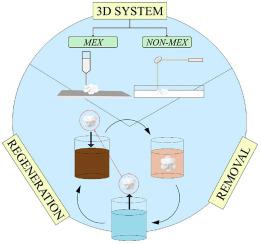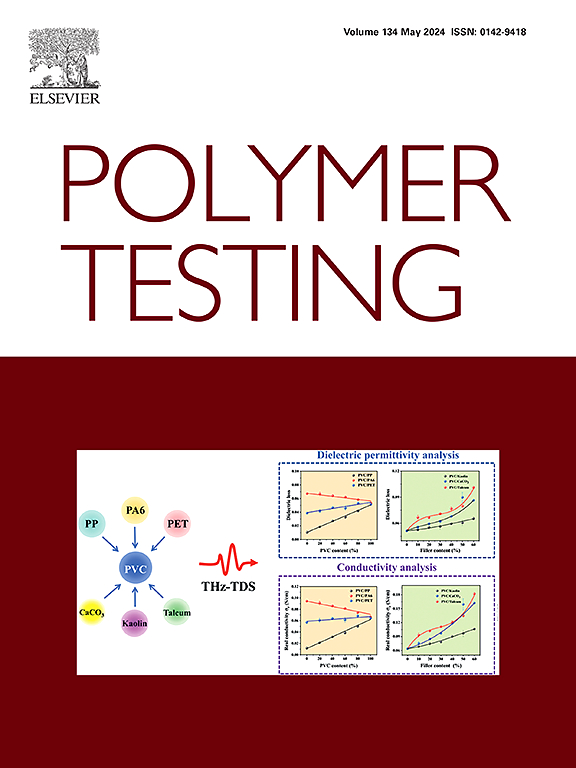Innovative 3D-printed devices for water pollutant removal: Comprehensive review on printing parameters, composition, properties and performances of the latest 3D-systems
IF 5
2区 材料科学
Q1 MATERIALS SCIENCE, CHARACTERIZATION & TESTING
引用次数: 0
Abstract
Water pollution is one of the most pressing problems of our time; in fact, it contributes to 24 % of global deaths. Therefore, finding an effective and efficient solution is crucially important. In this regard, systems based on polymers and containing, often, fillers, intended for potential water pollutant removal are well established. Recently, simultaneously with the impressive spread of 3D printing, the production of these systems by various additive manufacturing processes is gaining popularity, enabling the rapid production of complex geometries, high porosity, large surface area and mechanical strength. These systems, to date, are becoming particularly competitive with 2D or 1D systems produced by other methods, so understanding them fully is essential. Therefore, here we provide a review of the most recent advances in the field of manufacturing 3D systems for water remediation. First, a brief introduction is proposed on the cathegory of 3D printing, making a distinction between Material Extrusion (MEX) and non-Material Extrusion (non-MEX) systems, and the main performance parameters of water pollutant removal. Next, the process parameters, composition, and morphological and chemical-physical properties of the latest 3D systems are discussed in detail. In the last part, an overview is given of the functional properties of these systems, in terms of removal efficiency and reusability, which is crucial in an ideal life cycle of such systems. In conclusion, the main outcomes and future perspectives for the production of more efficient systems are provided.

用于去除水污染物的创新三维打印设备:全面回顾最新三维系统的打印参数、组成、特性和性能
水污染是当代最紧迫的问题之一;事实上,全球 24% 的死亡是由水污染造成的。因此,找到有效和高效的解决方案至关重要。在这方面,以聚合物为基础、通常含有填料、旨在去除潜在水污染物的系统已得到广泛认可。最近,随着三维打印技术的迅猛发展,通过各种增材制造工艺生产这些系统也越来越受欢迎,从而能够快速生产出具有复杂几何形状、高孔隙率、大表面积和机械强度的产品。迄今为止,这些系统与用其他方法生产的二维或一维系统相比尤其具有竞争力,因此全面了解它们至关重要。因此,我们在此回顾了用于水质修复的三维系统制造领域的最新进展。首先,简要介绍了三维打印的分类,区分了材料挤压(MEX)和非材料挤压(non-MEX)系统,以及去除水污染物的主要性能参数。接下来,详细讨论了最新三维系统的工艺参数、组成、形态和化学物理性质。最后,概述了这些系统在去除效率和可重复使用性方面的功能特性,这对此类系统的理想生命周期至关重要。最后,介绍了生产更高效系统的主要成果和未来展望。
本文章由计算机程序翻译,如有差异,请以英文原文为准。
求助全文
约1分钟内获得全文
求助全文
来源期刊

Polymer Testing
工程技术-材料科学:表征与测试
CiteScore
10.70
自引率
5.90%
发文量
328
审稿时长
44 days
期刊介绍:
Polymer Testing focuses on the testing, analysis and characterization of polymer materials, including both synthetic and natural or biobased polymers. Novel testing methods and the testing of novel polymeric materials in bulk, solution and dispersion is covered. In addition, we welcome the submission of the testing of polymeric materials for a wide range of applications and industrial products as well as nanoscale characterization.
The scope includes but is not limited to the following main topics:
Novel testing methods and Chemical analysis
• mechanical, thermal, electrical, chemical, imaging, spectroscopy, scattering and rheology
Physical properties and behaviour of novel polymer systems
• nanoscale properties, morphology, transport properties
Degradation and recycling of polymeric materials when combined with novel testing or characterization methods
• degradation, biodegradation, ageing and fire retardancy
Modelling and Simulation work will be only considered when it is linked to new or previously published experimental results.
 求助内容:
求助内容: 应助结果提醒方式:
应助结果提醒方式:


